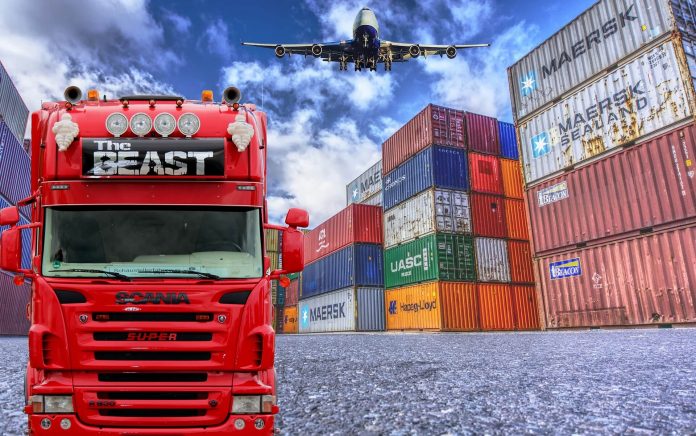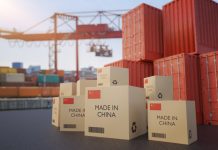Change is always constant in the supply chain industry. In fact, these changes depend on how businesses in the industry conduct their sustainability practices, and how they anticipate driver capacity. With that said, planning for the ever-evolving supply chain industry continues to be an obstacle for many professionals in the field.
Supply chain management is an exceptionally dynamic industry – this is most likely one of the reasons that you’ve been drawn into this sector, because as an innovative and entrepreneurial individual you love solving complex problems on a daily basis. Supply chain management (SCM) is inherently challenging because it contains a multitude of moving parts at any given time – a broadly multifaceted sector. With stakeholders operating on many levels from production and supply, to distribution and reception, balancing the needs of these actors often prompts unexpected challenges to arise. And in an industry which relies on brushing up against the cutting edge of technology, technological challenges will keep you on your toes.
For some organizations, facing up to supply chain challenges comes as an afterthought – and when supply chain management isn’t your specialty, it’s easy to get focussed on the things you do best for your customers, assuming that the supply chain will look after itself. This is a grave mistake, however. Even a smoothly flowing supply chain can be optimized to provide greater value – but more importantly, a supply chain can go from operational to dysfunctional in the drop of a hat if your organization doesn’t face up to the logistical challenges.
Effective supply chain management will optimise your business processes, keep stakeholders happy and see your profits soar. It will also future-proof your organization so that unforeseen events don’t have disastrous consequences. As COVID rolled out in 2020, wreaking havoc on the global supply chain, there were many businesses out there wishing they’d invested a little more time in planning for supply chain challenges.
Of all the challenges that supply chains face, there are a few that stand out above all else. Read on to see the seven most challenging hurdles that supply chain professionals currently face, as well as the actions companies can take to improve their operations when it comes to that field. By the time you’ve finished this article, you’ll be halfway to securing your supply chain, ensuring your business can operate effectively.

1) Adopting Artificial Intelligence
Now more than ever, Artificial Intelligence (AI) is being desired in many industries, including supply chains. In fact, experts predict that AI will contribute up to $15.7 trillion to the global economy by 2030, meaning that supply chains will most likely adopt AI-enabled solutions, and can determine the difference between failure and success.
Artificial Intelligence is going to play an increasing role in supply chain management in the future because of the potential that AI poses for optimising supply chain processes. On the fo the fundamental tenets of supply chain productivity is speed: swift decision making, reduction of cycle-times and quick responses to evolving circumstances. AI, with swathes of data to back it up, can introduce lightning speed to your supply chain, but only if it’s leveraged successfully. Herein lie the challenges for supply chain management posed by AI.
What’s The Solution?
For AI to be successful, the technology has to support it. That means that supply chains should encourage more domain expertise and data, along with technical innovation. AI is capable of managing inventory, automating deliveries and orders when stock is low – however, it can only do these things if effective systems are in place to provide the AI software with accurate data. For businesses looking to face up to the challenge posed by AI, data management will be key. By optimising data collection and leveraging AI, more impressive and measurable results will be expected for those organizations looking to improve their supply chains.
2) Changing Customer Behavior
Over time, customers have become fickle, and are looking for the best deals possible in the market. The truth is, when it comes to buying something, customers will buy with both their words and their wallets. And, with more and more people taking up digital and mobile commerce, buying isn’t just buying in-store, since they have the store in the palm of their hand. Therefore, the customer has already become more empowered in their spending power, which is something that all supply chains should take into account.
What’s The Solution?
Customers are holding more power than ever before in 2021 – but that power can be leveraged by strategic supply chain management, meaning that organizations can position themselves to be successful in the face of changing customer behaviour. If you can build a strong relationship with customers through marketing strategy and social media presence, then the loyalty and trust built up by these interactions will provide a solid foundation for future transactions. Customers are more empowered to find quality and value, but they’re equally strongly incentivized to stick with suppliers that have demonstrated these characteristics over time.

3) Limited Data On Current State Of Supply Chains
Too often, supply chains can be shut down, due to unfortunate circumstances. In 2020 alone, many supply chains had to cut back on production and let go of some of their workforce to slow the spread of COVID-19.
In light of this, supply chains have the decision to either keep going on productions through innovative ways, or stay closed to ensure the safety of their employees. Though, these decisions should be based on demand from consumers. Plus, keep in mind that COVID-19 isn’t the only factor that can explain supply chain weaknesses. In fact, other factors can play huge roles in the industry:
- Trade wars
- Natural disasters
- Sanctions
- Civil unrest
- Strikes carried on by employees and unions
In the absence of sophisticated datasets about these issues, supply chain management is often operating in the dark.
What’s The Solution?
Naturally, if it’s possible to gather greater data then investing time and resources in this will enable operators to better weather these challenges. However, in the absence of data, building a robust supply chain can mitigate many of these risks. “A supply chain will always be a multifaceted process with a multitude of moving parts – anywhere that businesses are able to simplify their operations or reduce the variables they rely on will provide stability in the absence of certainty,” says Amanda Marson, a writer at BoomEssays and Lia Help.
4) Inventory Optimization V. Traditional Strategies
For many years, traditional inventory control strategies have upheld how well or antiquated past performances have served in supply chain companies. The major problem with traditional methods is that they’re outdated, and might not take into account all of performance when doing inventory, meaning that mistakes spawned from human error, for example, would be ignored until after the launch of a product. Traditional strategies worked well enough in the past, but as customer expectations grow and organizations have increasing access to machinery and data, in 2021 there are no excuses for substandard inventory.
What’s The Solution?
So, to save companies from the embarrassment of pushing a faulty product out the door, it’s important for them to implement premise algorithms to determine exact requirements to ensure better performance in production, and to foremost possible events that might interfere with the process. And that would all stem from optimizing inventory.
Inventory optimization is an outside-in approach to supply chain challenges that uses streaming data to drive insights, determine any market shifts (past and present), and establish demand. Thus, supply chains will know when to increase production on certain products, or to keep it as is. In fact, predictive models involving prescriptive analytics are becoming exceptionally adept at providing a glimpse into future trends – organizations that get ahead of demand will have a solid head start in the supply chain game.
5) Increased Need For Waste Management
Finally, many initiatives want to eliminate the empty miles and excess CO2 emissions in companies, especially smaller ones. As it stands right now, not only are larger organizations increasingly using waste management as criteria to select partners, but it’s also the right action to take in the hopes of protecting the environment. Consumers and legislators are increasingly socially conscious meaning that falling behind in waste management strategies can be hugely costly. “Whether it’s mounting carbon taxes or simply a loss in customer faith due to negative publicity, businesses are strongly incentivized to develop an ethical and economic framework about their supply chains,” explains Natalie Richmond, a supply chain expert at OXEssays and Essayroo.
What’s The Solution?
Larger businesses are already investing in green strategies around waste management and are well placed to leverage economies of scale to reduce their environmental impact. So, where does that leave smaller companies? Well, as we’ve seen in recent years, smaller companies have taken the liberty of being the runners of more sustainable practices by investing in initiatives that rely on renewable energy and optimized supply chain management that limits emissions.
6) Managing Rising Costs
There are many factors coming to a confluence in 2021 that means supply chain organizations will see their costs potentially rising dramatically. Energy costs are growing as the environmental impact becomes acknowledged and fossil fuels dwindle and the global growth in customers mean that supply chains often have to service customers transcontinentally. What’s more, technological trends require more investment in pricey software and hardware for organizations that want to stay competitive and governments are becoming increasingly enthusiastic about imposing regulation on supply chain organizations. The result? An expensive landscape for supply chain organizations to operate within.
What’s The Solution?
In the face of rising costs, organizations are going to have to work harder than ever to optimize their processes. Inefficiencies will become increasingly costly, so exposing these should become a priority in the supply chain world. Implementing strategies designed around visibility enable businesses to see what’s operating effectively and what is failing. Systems such as YMS (Yard Management Systems) and TMS (Transportation Management System) will enable organizations to reduce the cost of transportation and streamline the logistical framework within which they’re operating.
7) Procuring Top Talent
Whilst AI is increasingly being leveraged to optimize systems, complex data management being implemented to control inventory and software is relied on to introduce visibility into transportation, there’s no denying that personnel input remains at the heart of effective supply chain management. Finding the right individuals has always been integral to the success of your organization, and it’s becoming increasingly challenging to find the right workers and hang on to them in a competitive employment field.
What’s The Solution?
Finding quality talent at every level of your business is essential to efficiency. Traditional strategies of packing warehouses with bodies to do the work are outdated. To incentivize top talent, logistical organizations are increasingly utilizing modern business techniques to appeal to potential recruits. A forward-thinking approach to staff welfare with contemporary perks such as holiday and travel will enable organizations to reach a wider pool of talent, and hang on to the employees they do have.
Conclusion
As you can see, supply chain organizations must address these challenges in the near term to ensure that production is carried out effectively and efficiently. Businesses are operating on a bumpy road in today’s logistical climate – the global supply chain has never been so insecure. This poses problems for organizations, sure, but at the same time there are new opportunities for innovative businesses to take advantage of.
Whether you’re struggling with the paucity of the top talent in the supply chain world, facing up to the growing demand for AI solutions or suffering from a lack of data on which to base your logistical models, there’s always room for improvement in the solutions you come up with. When preparing for these supply chain challenges, there’s no better time than now for organizations to be using innovative solutions to keep them on their toes. Did you come across any unexpected supply chain challenges in 2020? Let us know what the main concerns of your business were in the comments – we’d love to learn how you solved these problems!
About the Author
Lauren Groff is a writer and editor at Dissertation Services and Write An Essay. She is also a contributing writer for online publications, such as Assignment Writing. As a web developer, she helps design websites for various companies.































